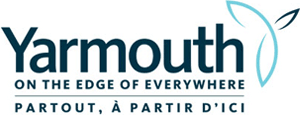Town of Yarmouth Water Utility - Regular Testing for Water Quality
 The Town of Yarmouth Water Utility delivers high-quality water to all customers connected to the distribution system. We ensure that quality by employing a robust sampling program. Our water is regularly tested by an independent lab to ensure it meets Canadian drinking water quality standards.
The Town of Yarmouth Water Utility delivers high-quality water to all customers connected to the distribution system. We ensure that quality by employing a robust sampling program. Our water is regularly tested by an independent lab to ensure it meets Canadian drinking water quality standards.
Test results consistently show that Canadian standards are met for all quality parameters including metals that have negative health effects such as lead and copper. Results demonstrate the quality of the water throughout the distribution system and up to the public/private property water supply line.
Reducing Metal Levels: Treating for Corrosivity
Water in our system is treated to limit corrosivity. This type of treatment helps to minimize the amount of metals such as lead, copper, and other unwanted metals and materials from getting into the water as it enters and contacts supply piping, plumbing, and fittings in residences.
Treating for corrosivity also provides the distribution system infrastructure with a level of protection to ensure its longevity for the future.
Why is Corrosivity Treatment Important? Reducing Risks from Lead and Copper
Harmful metals can find their way into your water as it enters the property. Supply piping and on-site pipes and plumbing could be made from older construction materials containing harmful amounts of metals such as lead. Today, the amounts of harmful materials like lead in plumbing are greatly reduced from what they were decades ago, but some older homes can still contain these materials. Lead may find its way into drinking water through plumbing materials such as pipes, solder, faucets, and fittings. While copper is an acceptable material for use in plumbing, lead is not. The National Plumbing Code (NPC) allowed lead material in pipes until 1975, lead in solder until 1986 and lead in fittings/faucets until 2013. Treatment to reduce corrosivity can help reduce exposure and keep levels below the “maximum acceptable concentration” or MAC in homes.
But even with treatment, unwanted amounts of metals can find their way to your tap. The problem with older “legacy piping and plumbing” that can contain these materials, and the risks they can bring, is at the forefront of Federal, Provincial, and Municipal government agendas with regard to water quality. Of key importance moving forward will be to determine and minimize risks to consumers. Lessening the exposure risk to lead is very important and is one of the top objectives.
Lead and Copper: Tips for Reducing Exposure Risks
- Flush pipes by running the water until it is cold (about a minute) after the water has been sitting in pipes for several hours e.g. first thing in the morning, after work, etc.)
- Use a drinking water treatment device certified to meet the National Sanitation Foundation (NSF) standards 53 or 58 (reverse osmosis units) for the removal of lead and copper. While a faucet-mounted unit is preferred, pitcher-style filters are also acceptable.
- Inspect and clean faucet aerators or screens monthly. If there is debris, inspect and clean more frequently to remove particles that may contain lead.
- Replace brass faucets and valves with those certified to have low lead content
- If the private side of the service line is composed of lead, replace it
- If there is older plumbing on the premises that contains solder that used lead, replace it with certified low-lead plumbing materials
New Lower Maximum Allowable Concentration of Lead and Copper
In 2019, Health Canada lowered their maximum acceptable concentration (MAC) for lead in drinking water from 0.010 mg/L to 0.005 mg/L and introduced a new MAC for copper of 2 mg/L.
Health Risks of Lead and Copper in Drinking Water
Health Canada advises that exposure to lead can affect brain development and behaviour in children, and has been linked to high blood pressure and kidney problems in adults. Every effort should be made to minimize lead exposure throughout a person’s life. Health Canada also advises that short-term exposure to levels of copper in drinking water above the maximum acceptable concentration (MAC) may cause nausea, stomach pain, vomiting and diarrhea. Long-term exposure to levels above the MAC may cause effects on the liver and kidney.
Lead and copper are only a concern if ingested. There is no concern with direct contact through bathing and showering for either of these metals. Boiling water will not remove lead or copper.
New Testing Requirements
New testing requirements have been put in place by the provincial government for municipal water utilities in Nova Scotia. As part of ensuring we meet these new requirements, the Town of Yarmouth Water Utility now samples and analyzes a representative amount of water samples at the private consumer taps. A key focus is on older homes that may have supply piping made from lead, or older plumbing that may contain lead in the solder or other fittings. These tests will serve to check for the corrosivity of the water by measuring the concentrations of lead and copper.
Previous requirements for testing for municipalities traditionally have been for the water quality in the main line up to the private supply, and not on private property. The new standard requires testing in homes which will require cooperation from private owners.
Lead in Water at the Tap
 Measurement of the concentration in the water, from the point of use, is the best way to help inform the consumer of the potential of risk of exposure to lead whether from the lead lateral supply and/or plumbing in their home.
Measurement of the concentration in the water, from the point of use, is the best way to help inform the consumer of the potential of risk of exposure to lead whether from the lead lateral supply and/or plumbing in their home.
Water in the Town of Yarmouth distribution system is essentially lead-free. If testing reveals the presence of lead at the tap, the cause is likely to be lead laterals and/or plumbing installed decades ago. The testing results at the tap will supply information to the water utility so it can move forward proactively in playing its role to help advise of risk potential and offer advice to customers on ways to reduce the risk of exposure to lead.
Apply for Free Water Testing
The Yarmouth Water Utility is seeking water customers to participate in its drinking water sampling program testing for lead and copper. Participation is free and voluntary and will provide you with information on lead and copper levels in your tap water. Learn more and apply at Free Water Testing.
For more detailed information on lead in drinking water, please visit Lead in Drinking Water
Water Testing Reports
These tests are performed to ensure metals/elements in water are kept within maximum acceptable concentrations (MAC). The following reports provide detailed measurements from each location as well as the MAC for each metal/element.

